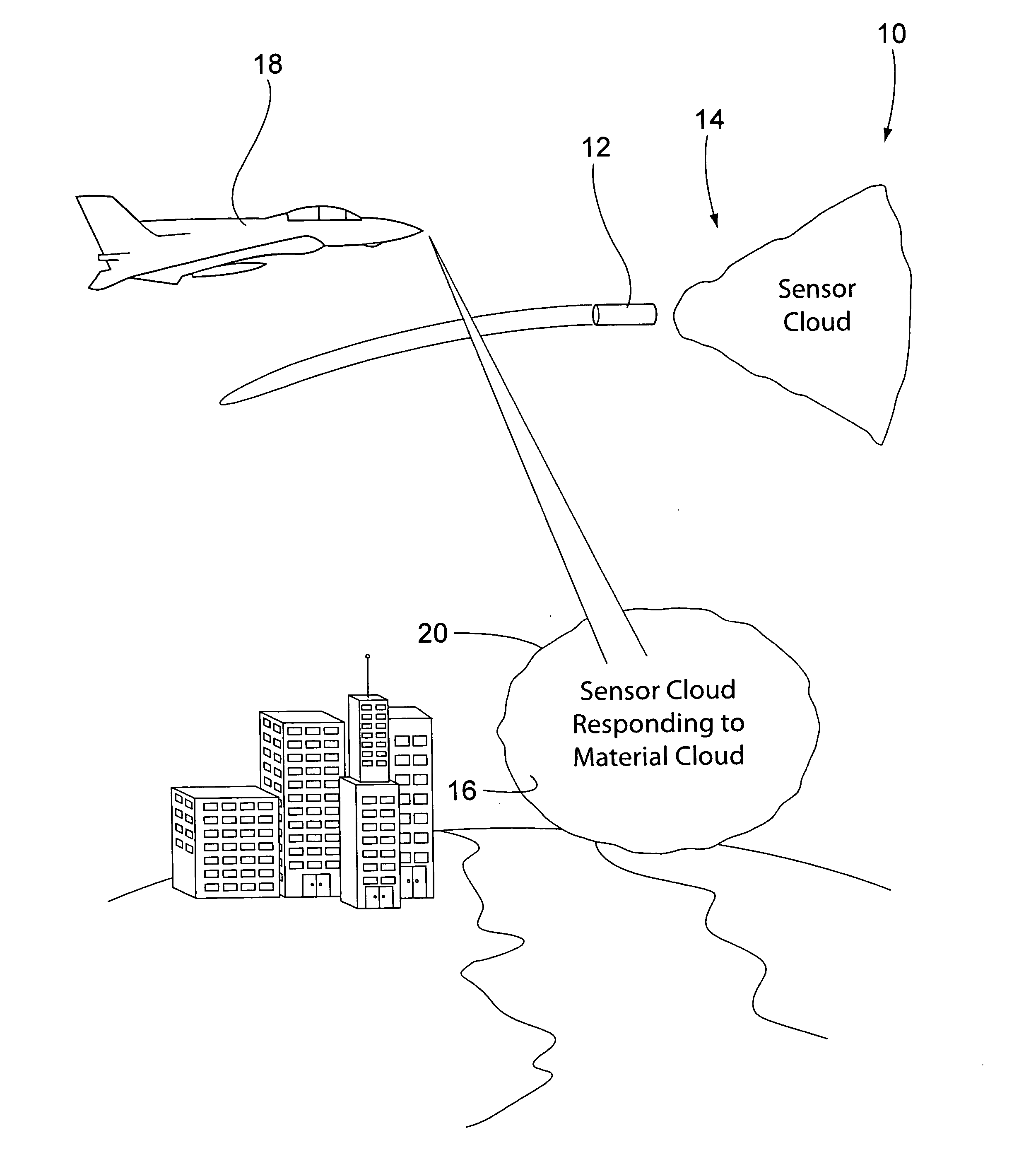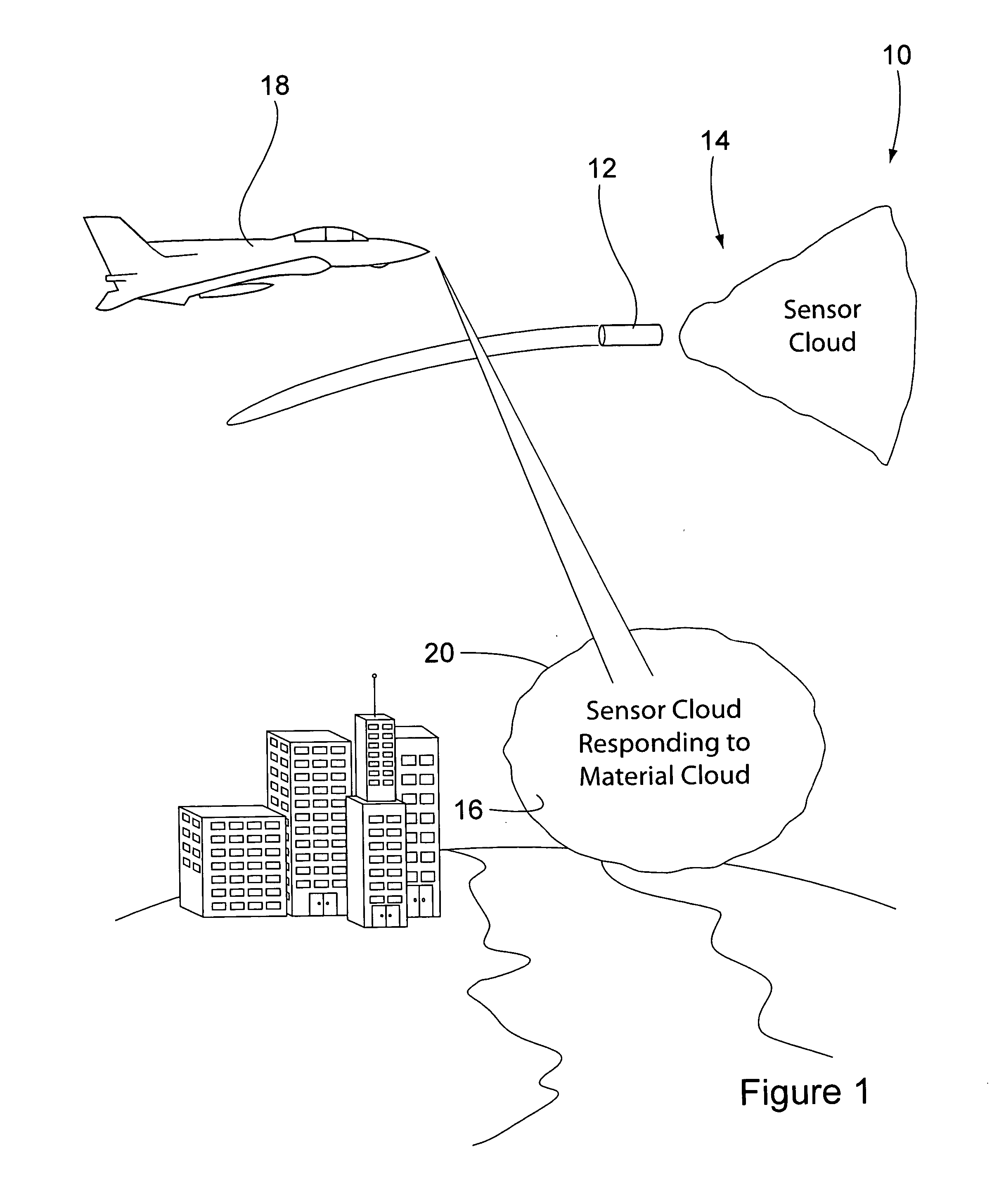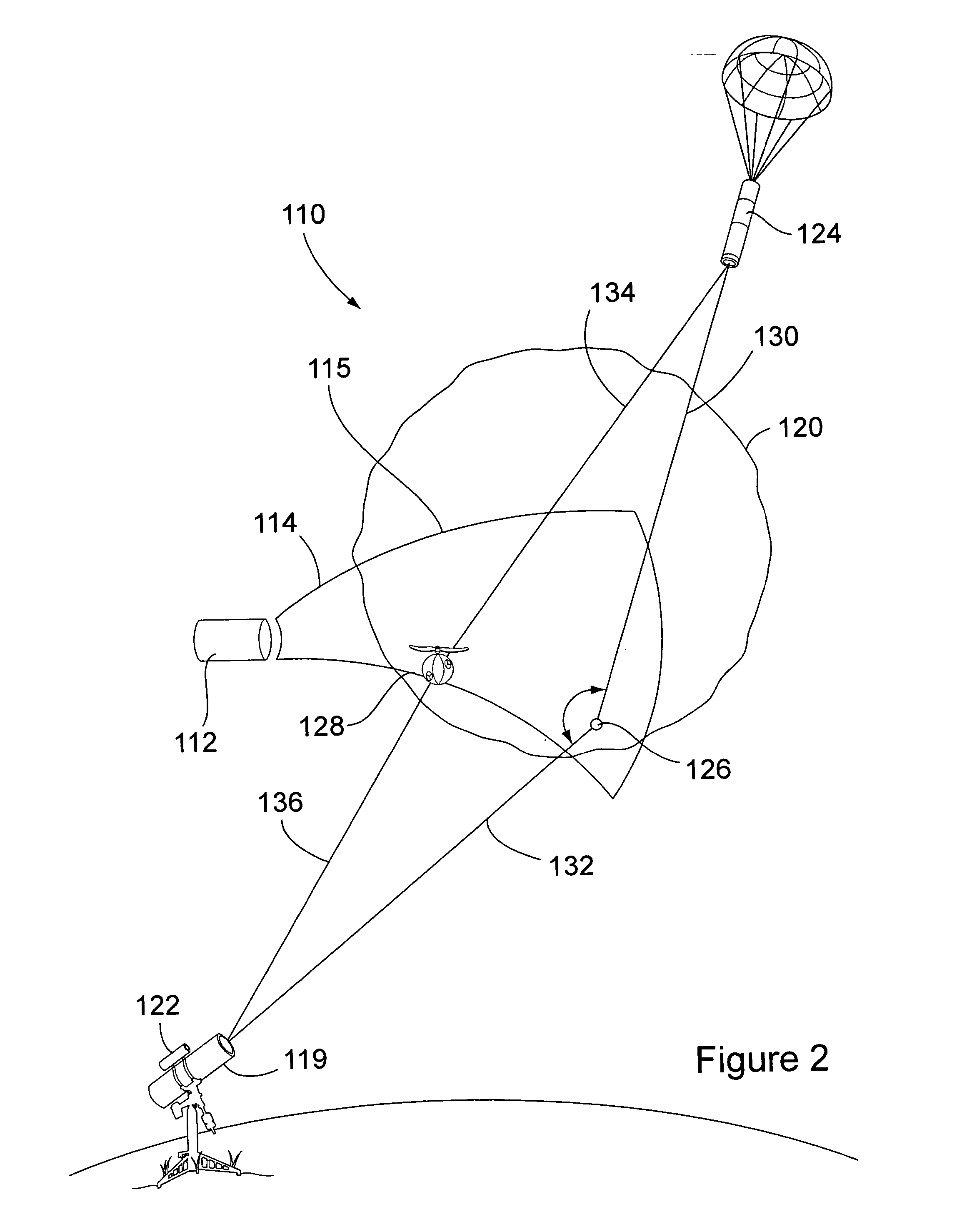Co-deployed optical referencing for responsive dust-based sensing system
a dust-based sensing system and co-deployment technology, applied in the field of apparatus and methods for calibrating optical detectors, can solve the problems of difficult detection of pollution cloud, difficulty in detecting pollution cloud, and material invisible and otherwise undetectable by human beings, and achieve high optical reflectivity, high optical absorption, and high gain reference signal
- Summary
- Abstract
- Description
- Claims
- Application Information
AI Technical Summary
Benefits of technology
Problems solved by technology
Method used
Image
Examples
Embodiment Construction
[0020] Referring to the accompanying drawings in which like reference numbers-indicate like elements, FIG. 1 illustrates a system 10 constructed in accordance with the principles of the present invention.
[0021] The system 10 of FIG. 1 includes a deployment mechanism, two clouds 14 and 16 of optical sensors, and a vehicle 18 that includes an optical detector. Also, FIG. 1 shows a cloud 20 of airborne material that can be, for example, a pollutant, a chemical or biological agent, or other impurity in the air. The cloud 16 of sensors is shown, at least partly, as being coincident with the cloud of material 20 whereas the cloud 14 of sensors is shown being spaced apart from the cloud 20. Where the sensors of the cloud 16 are in contact with the material cloud 20 the material reacts with the porous silicon of the sensors and causes the sensors to reflect a different spectrum than the spectrum reflected by the sensors in the unaffected sensor cloud 14.
[0022] In operation, deployment mec...
PUM
 Login to View More
Login to View More Abstract
Description
Claims
Application Information
 Login to View More
Login to View More - R&D
- Intellectual Property
- Life Sciences
- Materials
- Tech Scout
- Unparalleled Data Quality
- Higher Quality Content
- 60% Fewer Hallucinations
Browse by: Latest US Patents, China's latest patents, Technical Efficacy Thesaurus, Application Domain, Technology Topic, Popular Technical Reports.
© 2025 PatSnap. All rights reserved.Legal|Privacy policy|Modern Slavery Act Transparency Statement|Sitemap|About US| Contact US: help@patsnap.com



